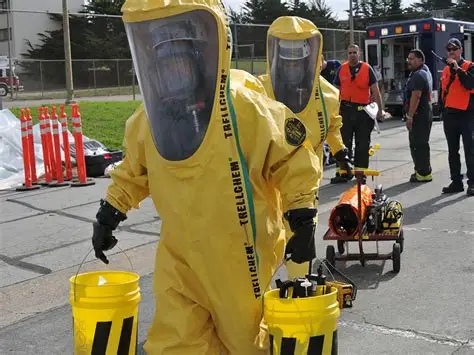Chemical Waste Disposal: Best Methods, Examples, and Safety Guidelines

Introduction
Chemical waste disposal is a critical part of laboratory and industrial safety. The U.S. Environmental Protection Agency (EPA) and other regulatory bodies strictly forbid pouring hazardous chemicals down drains or discarding them with everyday trash. Instead, waste must be safely collected, labeled, and managed through certified hazardous waste programs.
Environment, Health, and Safety (EHS) offices oversee most disposal processes, ensuring compliance with local and federal laws. While organic solvents are commonly destroyed by incineration, some wastes like mercury can be recycled. Proper disposal safeguards the environment and prevents serious health risks.
This guide explains what chemical waste is, examples, disposal methods, safety practices, and risk assessments to help you comply with regulations and maintain a safer workplace.
What is Chemical Waste?
Chemical waste includes unused, surplus, or contaminated chemicals that may pose risks to humans, wildlife, or the environment. These wastes are generated in laboratories, hospitals, research facilities, and manufacturing plants.
Chemical waste can be grouped into:
-
Hazardous waste – toxic, reactive, flammable, or corrosive chemicals
-
Universal waste – widely produced items like batteries and bulbs
-
Non-hazardous waste – low-risk substances
-
Household hazardous waste – paints, pesticides, cleaners, solvents
Examples of Chemical Waste
Common chemical waste types include:
-
Solvents (acetone, toluene, chloroform)
-
Used oil and lubricants
-
Asbestos-containing materials
-
Mercury and mercury devices (thermometers, lamps)
-
Pesticides and herbicides
-
Compressed gas cylinders
-
Laboratory reagents and powders
-
Industrial cleaning chemicals
-
Paints, dyes, and adhesives
-
Electronic waste and toner cartridges
-
Fluorescent bulbs and ballasts
-
Refrigerants and spray cans
-
Contaminated lab tools (pipettes, syringes, blades)
-
Resin and epoxy materials
-
Biological specimens preserved in chemicals
Chemical Waste Disposal Methods
Proper disposal methods prevent accidents, contamination, and regulatory violations.
1. Packaging
-
Use compatible, leak-proof containers.
-
Never mix incompatible chemicals.
-
Store halogenated and non-halogenated solvents separately.
-
Avoid placing solid waste in liquid solvent containers.
2. Labeling
-
Attach clear chemical waste labels to each container.
-
List full chemical names (no abbreviations or brand names).
-
Provide details such as building name and room number.
3. Storage
-
Store in centralized hazardous waste facilities when available.
-
Separate by chemical compatibility (acids, bases, oxidizers, flammables).
-
Dispose of aging containers promptly—ethers, for example, can form explosive peroxides.
4. Chemical Compatibility
-
Keep acids away from cyanides, sulfides, or bases.
-
Separate oxidizers from flammable solvents and reducing agents.
-
Store water-reactive compounds like sodium in dry, sealed conditions.
Special Types of Chemical Waste
5. Asbestos
Dispose of asbestos pads, gloves, and insulation only through trained personnel.
6. Batteries
Recycle batteries through approved bins; tape lithium battery terminals before disposal.
7. Empty Drums
Contact EHS for safe removal and recycling of empty chemical drums.
8. Ethidium Bromide
Dispose of contaminated gloves, gels, and plastics in sealed containers as hazardous waste.
9. Explosives
Handle compounds like TNT, picric acid, and azides only with expert help. Notify EHS immediately.
10. Gas Cylinders
Return empty cylinders to suppliers whenever possible.
11. Mercury Thermometers
Collect broken thermometers and mercury residues in sealed, labeled containers.
12. Paint Cans
Treat used or empty paint cans as chemical waste.
13. Peroxidizable Compounds
Dispose of ethers, dioxane, and similar compounds within six months of opening.
14. Polychlorinated Biphenyls (PCBs)
Found in old transformers, capacitors, and hydraulic fluids; must be managed under strict PCB disposal rules.
Conclusion
Chemical waste disposal is more than a legal requirement—it’s a safeguard for public health and environmental protection. From labeling and packaging to specialized handling of hazardous materials like mercury, PCBs, and explosives, every step matters.
Contact us – Pnprocess|Nima Mohammadrahimi
Recommendations
-
Provide regular EHS training for all staff.
-
Buy chemicals in smaller quantities to minimize waste.
-
Recycle whenever possible (batteries, mercury, electronics).
-
Keep safety audits and risk assessments up to date.
-
Consult your local EHS office for guidance on unusual waste streams
